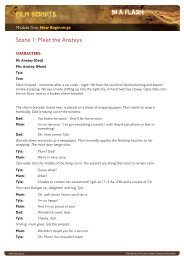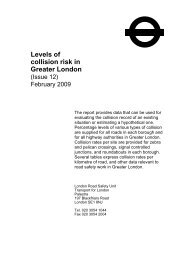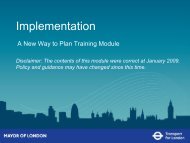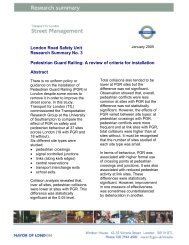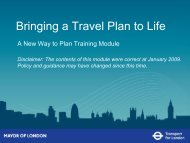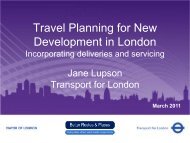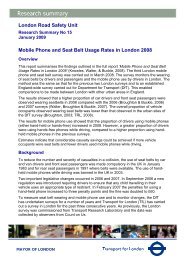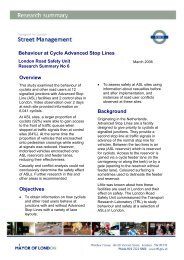An evaluation of the Safe Drive Stay Alive road safety presentation ...
An evaluation of the Safe Drive Stay Alive road safety presentation ...
An evaluation of the Safe Drive Stay Alive road safety presentation ...
- No tags were found...
Create successful ePaper yourself
Turn your PDF publications into a flip-book with our unique Google optimized e-Paper software.
23<strong>the</strong> mechanics <strong>of</strong> driving (changing gears, using <strong>the</strong> clutch). These tended to bestudents who had older siblings/cousins who could drive, and so had a more detailedidea <strong>of</strong> what driving would entail.For all, driving was about freedom and independence, going where you want to go,when you want and being free from having to rely on parents or older sibling for lifts.Fear and <strong>the</strong> need to be a careful and safe driver had not been a top <strong>of</strong> mindassociation with driving at that point in time.Experiences as drivers/passengersMost students‟ personal experience <strong>of</strong> driving was fairly limited (still illegal at <strong>the</strong>irage); although some had had previous diving experiences on private land (a localhippodrome) and o<strong>the</strong>rs had practiced with go-karts on specialised tracks.With regards to being a passenger, <strong>the</strong>re were many accounts <strong>of</strong> <strong>the</strong> driver (friends,family) being imprudent or driving dangerously, and even a few personal experiences<strong>of</strong> being involved in collisions. Such dangerous driving behaviours would range fromtalking on phone, not wearing seatbelt to swerving on <strong>the</strong> <strong>road</strong>, driving too fast orunder <strong>the</strong> influence (mainly alcohol). Some students reported having previouslyencouraged such behaviour, urging <strong>the</strong> driver to go faster, turn up <strong>the</strong> music orwould actively distract <strong>the</strong> driver. Mostly, even though this behaviour in <strong>the</strong> drivermight cause worry and concern, students did not felt hat <strong>the</strong>y were able to sayanything. In fact, if <strong>the</strong> <strong>of</strong>fending driver was one <strong>of</strong> <strong>the</strong>ir parents, <strong>the</strong>n <strong>the</strong> <strong>of</strong>fencesundertaken were more likely seen to be acceptable. In only a small minority <strong>of</strong>cases, students felt that <strong>the</strong>y were able to tell <strong>the</strong> driver and ask <strong>the</strong>m to stop <strong>the</strong>irbehaviour.“I don’t mind if my mum or dad are on <strong>the</strong> phone in a car, but if I got in someoneelse’s car and <strong>the</strong>ir mum was on <strong>the</strong> phone I’d be, tell <strong>the</strong>m to get <strong>of</strong>f <strong>of</strong> it. Withyour mum and dad you feel safe.”“My cousin goes down <strong>the</strong> <strong>road</strong> like crazy speed, swerving all across <strong>the</strong> <strong>road</strong> to tryand have a laugh.”“Sometimes when my dad drives really fast it like scares me but I’m kind <strong>of</strong> alrightabout it.”



